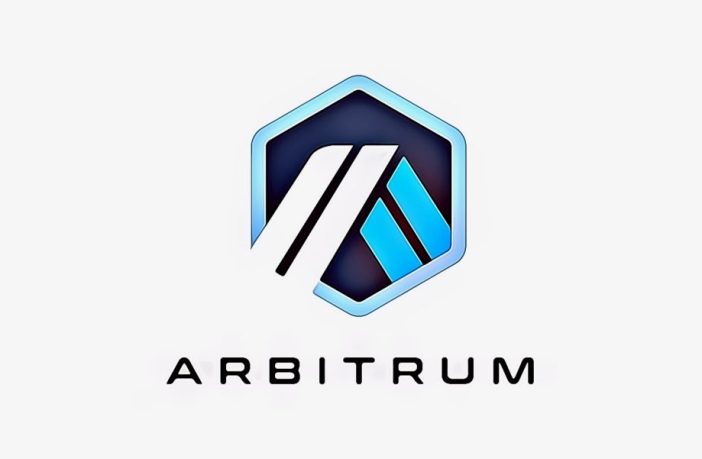Arbitrum, one of the premier Layer 2 scaling solutions for Ethereum, has made significant strides in its mission to bring scalability, security, and low-cost transactions to decentralized applications.
Yet, as with any rapidly expanding ecosystem, Arbitrum confronts serious challenges and tempting opportunities. Its decentralized autonomous organization—the Arbitrum DAO—has been in the spotlight, showing both impressive growth and some areas in need of attention. Despite the appearance of a net loss, the DAO has been diversifying its income sources and managing a strong treasury, all while the system attracts more users and new developers.
Contents
Arbitrum DAO Financial Overview
The Arbitrum DAO, in a recent financial disclosure, declared a total income of $107 million. But expenses far exceeded that figure (and are projected to continue exceeding it for the next several years), reaching $230 million—resulting in a net loss of $124 million.
This tells us that while the DAO is generating a pretty significant amount of revenue, its operating costs are also high and continue to grow as the ecosystem itself expands and evolves. Year-to-date (YTD), Arbitrum has generated $5.8 million in income but has faced a slightly higher expenditure of $6.5 million—resulting in an even smaller loss for the current year.
Transaction fees remain Arbitrum’s largest source of income. They make up a whopping 92% of the DAO’s total revenue. Some 7% of the DAO’s revenue comes from treasury management (which basically just means strategic tax planning). The DAO is in such a strong cash position that even this modest source of income makes Arbitrum look much better off than it actually is.
Even though the overall financial picture indicates the DAO is losing money, the bright side is the underlying strength of the revenue streams and treasury management. The Arbitrum organization is focusing on something quite specific—”scaling” the Ethereum system so that more users can enjoy its benefits. The more users there are, the more Ether is available and the more revenue the organization gets—mostly in the form of interest from the Ether they lend out.
The Growth of Arbitrum’s Real-World Assets (RWA)
Arbitrum has progressed significantly in adopting real-world assets (RWAs), a growing trend in the blockchain ecosystem. The RWA market cap for the Arbitrum ecosystem reaches $183.3 million, with around 15% of this held by the DAO. RWAs are tokenized assets from the traditional financial world, like government bonds, real estate, and commodities. They are increasingly a part of blockchain ecosystems as a way to introduce stability and real-world value into the crypto space.
Arbitrum holds real-world assets that largely comprise U.S. Treasuries (81%) and European Union assets (15%), with a small portion (2.5%) invested in real estate. Of the DAO’s top yielded assets, BENJI stands out with a 40% holding, followed by BUIDL, which recently saw a roughly 10% week-over-week increase. These RWAs not only provide stability to the DAO’s treasury but also generate returns. For instance, Arbitrum earned $523K in interest via STEP: a protocol for tokenized, real-world asset yields.
1/ 🚨 Creator Spotlight: @EntropyAdvisors
A research-driven contributor to Arbitrum DAO. Your go-to source for all things @arbitrum data (and more).
Featured dashboards:
• Arbitrum DAO Financials (NEW 🔥 )
• Arbitrum RWA Landscape
• Uniswap V4 on Arbitrum
• Ethena Metrics pic.twitter.com/dJxojOQcXe— Dune (@Dune) March 27, 2025
Combining DeFi innovations with stable, real-world assets positions Arbitrum as a leader in linking traditional finance with the blockchain world. The DAO seems clear in its plan to ride the tokenized real-world assets wave, a potential key driver for future growth in the ecosystem.
Uniswap V4 on Arbitrum: A Key Milestone
A landmark development for the Arbitrum ecosystem is the deployment of Uniswap V4, the popular decentralized exchange (DEX), on its network. Uniswap V4 on Arbitrum has enjoyed a strong reception, with a total trading volume of $521 million and $18 million in liquidity (the last 30 days saw a notable $13 million uptick in that figure). Meanwhile, fees generated by V4 trades total $266,000, and 1,000+ liquidity pools with 140 hooks now constitute 1.5% of the total decentralized exchange volume on Arbitrum.
Uniswap’s ever-increasing success on Arbitrum illustrates the burgeoning adoption of this Layer 2 network. Presently, this Layer 2 network is second in adoption only to Ethereum, which is still the most accepted platform in the space. The confidence that Uniswap V4 on Arbitrum commands is evidenced by the very high volumes and liquidity that it enjoys. Overall, the situation is a reassuring one for Layer 2 networks. They continue to prove their worth to the crypto community by providing low fees, fast transactions, and a high level of reliability.
Ethena Labs and Strong TVL Growth
The success of platforms like Ethena Labs also mirrors the decentralized finance growth on Arbitrum. They have a total value locked of $6.8 billion, which includes $5.3 billion in USDe and $1.4 billion in USDtb. Elsewhere, Ethena is doing exceptionally well in generating revenue as well. They snared $350 million in revenue from USDe, and $1.6 million from USDtb. Confidence in their offerings is so high that 58% of USDe has been staked into sUSDe.
This sharp increase of TVL is a strong indication of the burgeoning demand for DeFi on Arbitrum, and the growth in apparent usage of the platform and staking of its native token further cements the impression of Arbitrum as a credible option among Ethereum scaling solutions. If you are a user or developer looking for a robust alternative to on-chain Ethereum, there is a strong case to be made for DeFi on Arbitrum.
The Road Ahead for Arbitrum
Even though its latest report showed it is in the red, Arbitrum’s long-term outlook is still all rainbows and sunshine. Reasons include the DAO generating revenue through transaction fees, the RWA diversification strategy that is making real-world, off-chain assets available to smart contracts, and the burgeoning adoption of decentralized finance applications on the platform.
The Arbitrum ecosystem is tending to evolve. It’s going to be more important for the decentralized autonomous organization to focus on the usual business priorities of any startup: managing expenses while scaling operations to meet the growing demand we’ve seen in the past couple of months.
Nonetheless, because it’s been broadly adopted and has shown some interesting innovations, I think Arbitrum is well-positioned to keep overcoming these business challenges and remain one of the leading Layer 2 solutions.
Disclosure: This is not trading or investment advice. Always do your research before buying any cryptocurrency or investing in any services.
Follow us on Twitter @nulltxnews to stay updated with the latest Crypto, NFT, AI, Cybersecurity, Distributed Computing, and Metaverse news!




